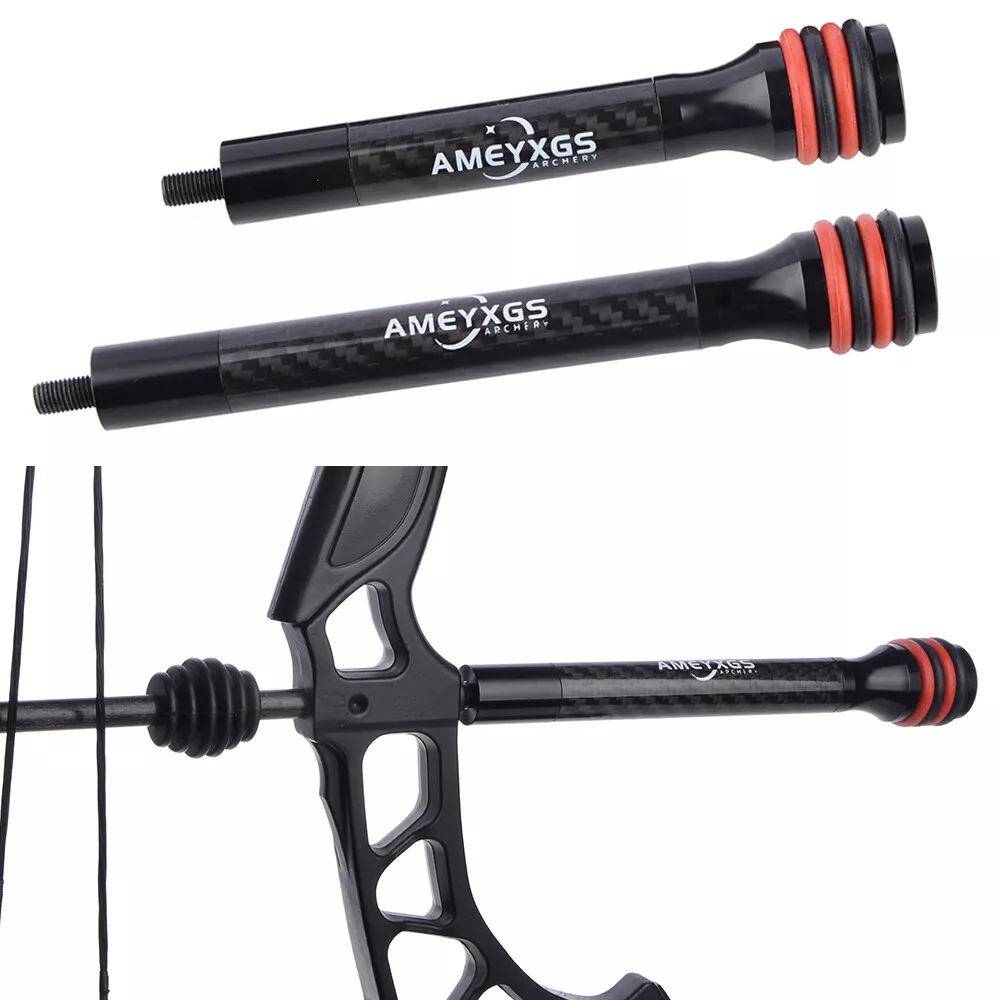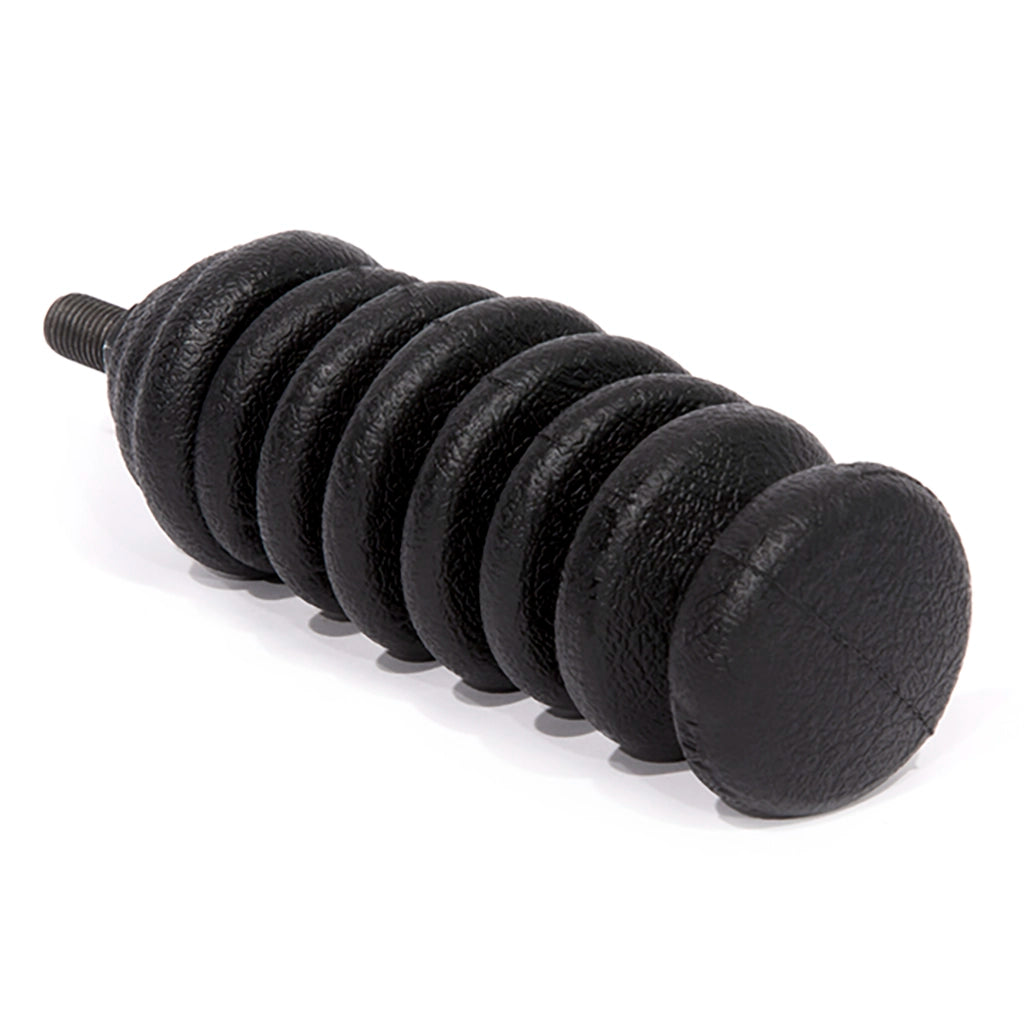Archery Stabilizer Essentials: Improving Your Shooting Experience
Archery Stabilizer Essentials: Improving Your Shooting Experience
Blog Article
The Ultimate Overview to Choosing the Right Archery Stabilizer for Enhanced Precision
Archery is a sporting activity that requires accuracy and accuracy, and selecting the ideal devices is crucial for accomplishing ideal results. Among the different accessories available, an archery stabilizer plays a considerable role in improving precision. With so numerous alternatives on the market, it can be overwhelming to determine which stabilizer is the appropriate fit for your requirements. In this thorough guide, we will explore the crucial factors to take into consideration when picking an archery stabilizer for boosted precision. From finding the optimum length to recognizing the various styles and materials, we will dive into everything you need to know to make a notified decision. So, whether you are a seasoned archer wanting to update your tools or a novice looking for support, join us on this journey as we untangle the keys to picking the excellent archery stabilizer.
Length: Discovering the Optimum Stabilizer Size
Figuring out the suitable stabilizer size is crucial when selecting an archery stabilizer for ideal efficiency. The size of a stabilizer straight affects the balance, security, and precision of the bow. A stabilizer that is also long can make the bow really feel top-heavy and hard to regulate, while a stabilizer that is too short might not provide adequate security and dampening of resonances. Locating the right size calls for thinking about elements such as the archer's shooting style, bow weight, and personal choice.
A longer stabilizer, typically varying from 8 to 12 inches, can offer better stability and reduce bow torque. This is particularly useful for archers who fire with a high draw weight or those that tend to torque the bow during the shot. The included size helps to distribute the weight uniformly and counterbalance any torque or motion.
On the various other hand, a shorter stabilizer, typically between 4 to 7 inches, supplies much more ability to move and quicker action. It is preferred by archers who shoot with a reduced draw weight or those who call for more movement, such as hunters or 3D shooters. The much shorter size permits much easier movement with tight rooms and faster adjustments.
Inevitably, the optimum stabilizer size refers individual choice and shooting design. It is recommended to explore different lengths and observe the impacts on security and precision. Consulting with seasoned archers or professionals can likewise supply useful insights and referrals.
Weight: Identifying the Appropriate Stabilizer Weight
After considering the optimum stabilizer length, the next important element to consider when choosing an archery stabilizer is identifying the suitable stabilizer weight - archery stabilizer. The weight of the stabilizer plays an important duty in boosting precision and stability throughout the shot
The weight of the stabilizer affects the balance and control of the bow. A heavier stabilizer can give enhanced stability and control, particularly for shooters with a tendency for unsteady hands or inconsistent shots. It assists to soak up the resonances and recoil generated by the bow, minimizing torque and reducing the result on the arrowhead's trip.
On the other hand, a lighter stabilizer enables for a quicker and much more responsive bow. It can be useful for shooters who prioritize maneuverability and speed over security. Lighter stabilizers likewise minimize tiredness throughout lengthy shooting sessions or competitors.
To determine the suitable stabilizer weight for your demands, it is essential to consider your shooting design, physical stamina, and bow setup. Try out different weights and observing the effect on your shooting efficiency is crucial to discovering the excellent equilibrium.
Ultimately, the optimal stabilizer weight will vary for each and every individual archer. It is recommended to begin with a modest weight and make adjustments based on individual choice and capturing outcomes. Remember, the goal is to achieve a regulated and secure shot, while additionally maintaining convenience and simplicity of usage.
Materials: Selecting the Right Products for Sturdiness and Performance
When picking an archery stabilizer, it is essential to carefully think about the materials made use of in its building to guarantee toughness and enhance performance. The option of materials can considerably affect the total top quality and effectiveness of the stabilizer.
One of the most typically used products for stabilizers is carbon fiber. In addition, carbon fiber stabilizers are immune to temperature adjustments and are less most likely to warp or bend over time.
Another preferred material for stabilizers is light weight aluminum. Light weight aluminum stabilizers are known for their toughness and strength. They supply outstanding dampening capabilities, decreasing the quantity of shock and resonance moved to the shooter's hand. Aluminum stabilizers also supply a variety of personalization choices, permitting archers to adjust the weight and length to suit their choices.
Some stabilizers are built making use of a combination of products. As an example, a stabilizer might have a carbon fiber core covered in an aluminum covering. This hybrid style incorporates the most effective high qualities of both materials, supplying ideal stability, toughness, and efficiency.
Style: Recognizing the Different Stabilizer Layouts and Their Impacts
Taking into consideration the products used in archery stabilizers, it is very important to currently look into the various styles of stabilizers and their corresponding effects. The design of an archery stabilizer plays a vital role in improving accuracy and lowering vibration throughout the shot. There are a number of different layouts available in the marketplace, each with its own one-of-a-kind qualities.

An additional preferred design is the side bar stabilizer. This design involves affixing a brief pole sideways of the bow, parallel to the major lengthy rod. Side bar stabilizers aid in counteracting the weight of accessories, such as views or quivers, and provide added stability to the bow.
Some stabilizers come with flexible weights. These stabilizers allow archers to tweak the equilibrium and feeling of their bows Visit Your URL by including or getting rid of weights. This function is specifically valuable for archers that like a specific weight circulation or desire to try out different configurations.
Moreover, some stabilizers incorporate wetting modern technology to decrease resonance and sound. These stabilizers typically have built-in dampeners or use products that absorb resonances, causing a smoother and quieter shot.

Accessories: Discovering Additional Accessories for Enhanced Security
To better enhance security in archery, extra accessories can be used. These accessories are created to function in combination with the archery stabilizer to supply an also better degree of security and accuracy. One such accessory is the V-bar or the side stabilizer install. This accessory permits the accessory of a 2nd stabilizer, which assists to lower and stabilize the bow torque. By dispersing the weight evenly on both sides of the bow, the V-bar assists to decrease any unwanted movement during the shot.
An additional device that can improve security is a bow sling. A bow sling is a strap that affixes to the bow and enables the archer to keep an unwinded grasp on the bow take care of without the anxiety of dropping it (archery stabilizer). This kicked back grip assists to minimize muscular tissue stress and enables a much more consistent and secure shot
Additionally, a stabilizer weight system can be used to fine-tune the equilibrium and security of the bow. These weight systems typically contain small weights that can be included or removed from the stabilizer to readjust the equilibrium point of the bow. By finding the optimal balance factor, archers can attain an extra secure and precise shot.
Conclusion
Finally, choosing the right archery stabilizer includes thinking about factors such as length, weight, materials, layout, and extra devices. The optimal stabilizer size and weight will certainly rely on private choices and shooting style. Picking resilient products is essential for resilient efficiency. Understanding the different stabilizer layouts have a peek at this website will aid boost precision. Exploring extra devices can better improve stability throughout archery shooting.
Identifying the excellent stabilizer length is essential when picking an archery stabilizer for optimum performance. A stabilizer that is too long can make the bow feel hard and top-heavy to control, while a stabilizer that is too short might not give enough stability and dampening of vibrations - archery stabilizer.Taking into account the materials utilized in archery stabilizers, it is crucial to currently delve into the different designs of stabilizers and their respective impacts. Side bar stabilizers help in reversing the weight of devices, such as views or quivers, and supply additional stability to the bow
These weight systems commonly are composed of tiny weights that can be included or gotten rid of from the stabilizer to readjust the click here for more info balance factor of the bow.
Report this page